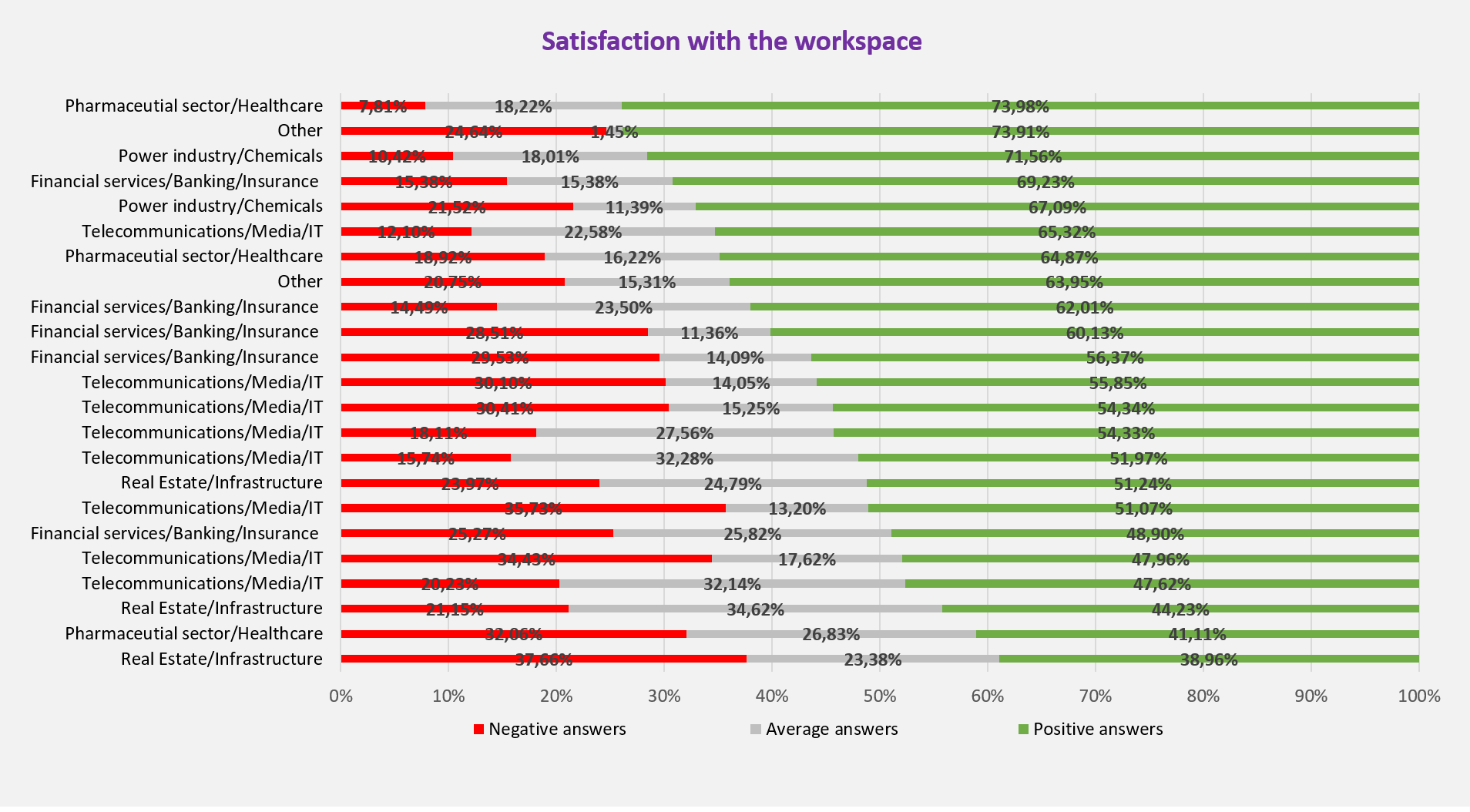Groundhog day
Let’s imagine that we spend every day in a place where we sit in for 8 hours straight. Work that requires concentration, phone calls and discussions usually take place at our or our
During the day, we planned to discuss one of the projects with the client at our office but eventually we went to the
During the day we wanted to have a quick rest but there are not enough chairs in the small kitchen (so we decide to eat the dinner at the desk). We do not have the access to the areas and furniture where we could relax in and have a conversation with the colleague from
It all makes us think that we could carry out our tasks better and that we would be more satisfied with our office space if the office was organized in a better way and more enjoyable. For example – if it guaranteed the areas for work that requires concentration as well as the spaces dedicated to comfortable collaboration. On the other hand, we are used to the current office layout and we are not really convinced what and how it could be changed. Moreover, we have doubts if we are ready and open to changes.
Why is more attention being paid to the quality of workplace?
That is the daily routine of a lot of polish workers. It is not hard to imagine that the worker that is mainly concentrated on surviving in the office space and the battling with its limits is moderately determined, effective and engaged. From the management team and the workers’ point of
What should our office communicate?
First of all, the office environment should take into account our different roles (not only as a worker).
Third of all, office space should give the sense of stability and safety as well as freedom (because only if both are guaranteed, workers are able to realize their full potential and be creative).
That way the sends a message to the outside world (and the potential talents): comfort and the quality of your work is a priority for us. We want you to feel good here and do your job with passion and engagement. Welcome! Only when you realize your full potential will you be able to make our organization better.
Satifaction with workplace - In Design research results
What is the level of

The graph shows the percentage of the answers concerning the satisfaction with the workplace.
Negative responses - aggregated responses "I completely disagree” and "I disagree” with the statement "In general, I am satisfied with my current workspace”. Positive responses – aggregated responses "I agree” and “I completely agree” with the statement „In general, I am satisfied with my current workspace”. Average responses are “I do not have an opinion”.
The level of satisfaction in the
There are also
Outcomes interpretation
The culture of
We interpret the research results (concerning the level of satisfaction and other analysis) in relation to
The other equally important aspect of the analysis is the context of the culture of the company – its organizational model and structure, management strategies, internal relations and values.
Only when those complex and diverse aspects of the company are taken into account are we able to fully and comprehensively interpret the results.
Those and other analysis constitute the research by In Design. They are the starting point for the creation of the specific architectural solutions. The research is the initial stage of the creation of the vision of the new office. It gives the possibility to determine precisely the needs of the organization in relation to the desired changes that come along with the new office layout.
